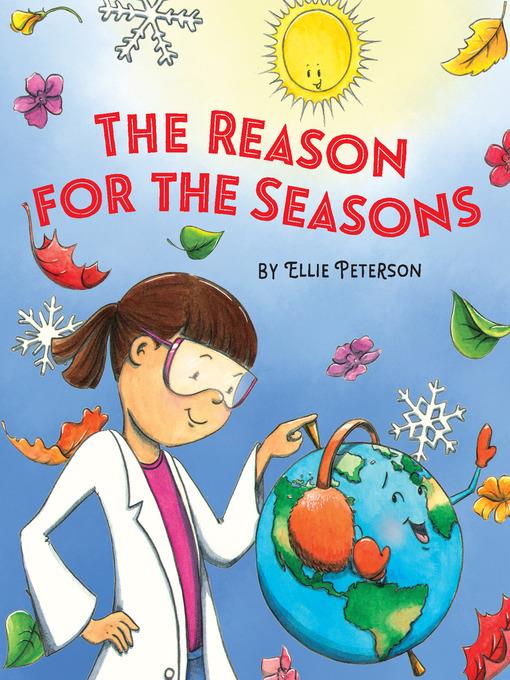
The Reason for the Seasons
فرمت کتاب
ebook
تاریخ انتشار
2020
Lexile Score
900
Reading Level
4-5
نویسنده
Ellie Petersonشابک
9781635923551
کتاب های مرتبط
- اطلاعات
- نقد و بررسی
- دیدگاه کاربران
نقد و بررسی

Starred review from February 1, 2020
Gr 1-4-Seasons happen everywhere on the Earth, but the reason they occur may not be as obvious as it seems. Joulia Copernicus is a scientist: she observes the world around her and investigates what she does not know until she finds the answer. Spring, summer, fall, and winter are the four primary seasons, though some places experience additional seasons depending on their location. The widespread popular belief is that seasons occur because of how close the Earth happens to be to the sun. Joulia investigates this conclusion, however, and determines that there is more to the seasons than first meets the eye. Oversize pages and vibrant illustrations immediately draw readers into the narrative. While it is filled with an abundance of information, the text is written in a way that is easily accessible to elementary school-age readers. Instead of immediately getting to the conclusion, the story progresses through incorrect opinions first and explains the fault in each one; therefore, readers directly experience the scientific process through a narrative structure. Just as a real scientist questions the assumptions of the world, Joulia gets to the bottom of the question of the seasons in an enjoyable and educational way. The final page provides a scientific experiment to show how seasons work and to help explain this concept to others. VERDICT This book will help elementary school students better understand one of the most widely recognized aspects of space science.-Mary Lanni, formerly at Denver Public Library
Copyright 2020 School Library Journal, LLC Used with permission.

January 15, 2020
Joulia Copernicus, a young scientist in a white lab coat and safety goggles, returns to help readers learn why seasons exist. In the jaunty first-person narration readers will remember from series opener It's a Round, Round World! (2019), Joulia tells why many think the Earth has seasons: its orbit around the sun and its rotation. She demonstrates why these theories are incorrect and then introduces the answer: the role of Earth's tilt. The logical structure starts with misconceptions and moves toward understanding, but it is the full-color illustrations, bristling with fun details pertaining to the seasons and anthropomorphic planetary bodies, that make this book stand out. Joulia's obvious enthusiasm, accessible language, and the use of sequential visual formats actively involve kids in thinking about scientific concepts. The last page explains how Johannes Kepler's discovery about 400 years ago regarding the Earth's path has led to some of our confusion and also gives instructions for a simple experiment. Joulia presents white, as do the two other humans depicted. While other, diverse characters would be welcome, it's good to see a capable girl excited about science. The seasons are those readers in the northern U.S. will recognize, although Joulia explains how variations occur near the equator and in the Southern Hemisphere. A breezy, information-packed, visually attractive explanation of an important elementary school science topic. (Informational picture book. 6-8)
COPYRIGHT(2020) Kirkus Reviews, ALL RIGHTS RESERVED.

February 15, 2020
Grades 2-4 Scientist Joulia Copernicus?a young white girl in goggles and a lab coat?takes readers around the world and into space to explain why we have seasons on Earth. She begins by debunking some common reasoning, such as seasons being caused by Earth's rotation or its distance from the sun. When Joulia arrives at the correct reason?the tilt of Earth's axis?she uses a rotating theater spotlight to demonstrate how different angles of light yield different results. Fun, expressive illustrations depict Joulia taking an active part in learning as she explains how Earth's tilt would look in space, the effects it has on different parts of the globe, and how misconceptions about Earth's seasons came to be. Readers will find Joulia's love and excitement for science contagious and might even find ideas for science fair projects as a result. An end note on How to Be a Scientist provides additional information and a guide for how to explain seasons to others. An excellent and accessible introduction to the science behind Earth's seasons.(Reprinted with permission of Booklist, copyright 2020, American Library Association.)

























دیدگاه کاربران